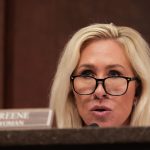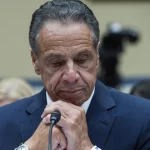The Democratic National Convention concluded on Thursday, capping off four nights of primetime programming.
The event — initially scheduled for Milwaukee in July, before being postponed and moved largely online — brought the 2020 race one step closer to the general election, officially making Joe Biden the Democratic nominee for president.
Here are the five biggest takeaways from the convention.
Biden delivered
The stakes were huge for Biden’s big speech on Thursday night.
He needed to make his case against President Trump, present himself as a competent alternative — and, just as importantly, avoid any mishap that would have provided ammunition to the Trump campaign, which has been casting aspersions against him for months.
Biden did all three and more, in a conspicuously sharp performance.
The overall message was that he could restore the United States to a better place after the tumultuous Trump years and repair the damage wreaked by the coronavirus.
“In this dark moment, I believe we are poised to make great progress again — and we can find the light once more,” Biden said toward the speech’s end.
The convention as a whole was less about policy and more about underlining Biden’s decency, while presenting Trump as incompetent and fractious.
Biden’s address was careful to appeal to voters in the center ground.
“This is not a partisan moment. This must be an American moment,” he insisted, promising to be a president who would also respect those who had not voted for him.
He also delivered powerful points on racial justice, referring to his conversation with George Floyd’s daughter Gianna, and asserting that he had been moved to run for the presidency in the first place because of his horror at how Trump responded to racist violence in Charlottesville, Va., in August 2017.
There were virtually no flubs or awkward moments of the kind that Biden is sometimes known for, and — to the organizers’ undoubted relief — no technical problems either.
Even GOP strategist Karl Rove praised the speech on Fox News Channel.
There are hard weeks of campaigning ahead but Biden delivered at the crucial moment.
The Obamas also starred, and scorched Trump
Speeches by former President Obama on Wednesday, and former first lady Michelle Obama on Monday, were the other oratorical high points of the four-day convention.
The former president’s speech was the more historically remarkable, because of how sharply he excoriated Trump.
Obama cast his successor as a danger to the American republic, warning that Trump and his allies would be happy to “tear our democracy down if that’s what it takes to win.”
Obama also blasted Trump for his handling of protests for racial justice, and for his response to the coronavirus crisis. Responding to the threat of COVID-19, Obama said, “depends on a fidelity to facts and science and logic — and not just making stuff up.”
The address drew Trump’s anger on Twitter, where he accused the former president of spying on his campaign and contended that Obama had been reluctant to endorse Biden.
Michelle Obama was the clear star of the convention’s first night.
She asserted that Trump “cannot meet this moment. He simply cannot be who we need him to be for us.” He was, she added, “clearly in over his head.”
The speeches by the Obamas also punched harder than addresses by their most obvious counterparts — former President Clinton and 2016 Democratic nominee Hillary Clinton.
‘Vote, vote, vote’
Any convention is an opportunity for a party to gin up enthusiasm among its supporters, with an eye to high turnout at the polls come November.
Democrats are particularly on edge this year, with the coronavirus likely impacting in-person voting in a big way. Trump has blasted away for months at the legitimacy of voting by mail.
The convention also took place against the backdrop of controversy over the Postal Service and whether it is being interfered with at Trump’s behest to thwart mail-in voting — a charge the administration denies.
At the convention, the message to vote — and to request a mail ballot now, if needed — was reinforced again and again.
“This can’t be another woulda-coulda-shoulda election,” said Hillary Clinton. “Most of all, no matter what, vote.”
Trump and his allies are “hoping to make it as hard as possible for you to vote, and to convince you that your vote doesn’t matter. That’s how they win,” said former President Obama. “That’s how a democracy withers, until it’s no democracy at all.”
Michelle Obama delivered the same message with her words — and by wearing a necklace that spelled out “Vote,” which swiftly went viral on social media.
The virtual convention went smoothly — but still hurt ratings
The convention was always going to be unusual, since it could not be held in front of a large live audience. None of the major figures, including Biden or his vice presidential pick, Sen. Kamala Harris (D-Calif.), appeared in Milwaukee.
The convention organizers made the best of things. Technical misfires were kept to a minimum, video presentations were largely effective and some moments were hailed as an improvement on their traditional form — notably the state-by-state roll call that formally nominated Biden.
On the final night, a speech by 13-year-old Brayden Harrington, who has a speech impediment as Biden himself once did, also drew praise.
All of that was not enough to save the convention from suffering in the TV ratings, however.
On the first two nights, broadcast ratings were down by more than 40 percent from their equivalents during the 2016 Democratic National Convention. There appears to have been an improvement on night three; no figures are yet available for the final night.
Polling in the next few days will provide some clues as to whether the convention’s impact was dulled by its virtual nature. Nominees generally enjoy a polling bounce of around 5 percentage points in the aftermath of a convention.
Trump was sidelined but his moment is coming
The president dislikes being anywhere other than center stage.
He made some efforts to counter-program the Democratic National Convention, including sitting for an interview with Fox News Channel’s Sean Hannity that was broadcast Thursday evening.
Trump also delivered public remarks on Monday and Tuesday, and attacked Biden, former President Obama and former New York City Mayor Michael Bloomberg on Twitter.
None of it really stole the spotlight away from the Democrats, however.
That will all change next week when the Republican National Convention is expected to be just as dominant.
Trump has said he will deliver his acceptance speech from the White House.
It will be a dramatic — and controversial — setting from which to effectively fire the starting pistol for the final stretch of the 2020 campaign.
Story cited here.
























